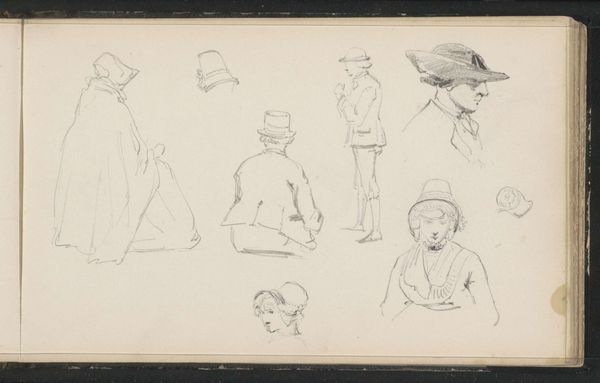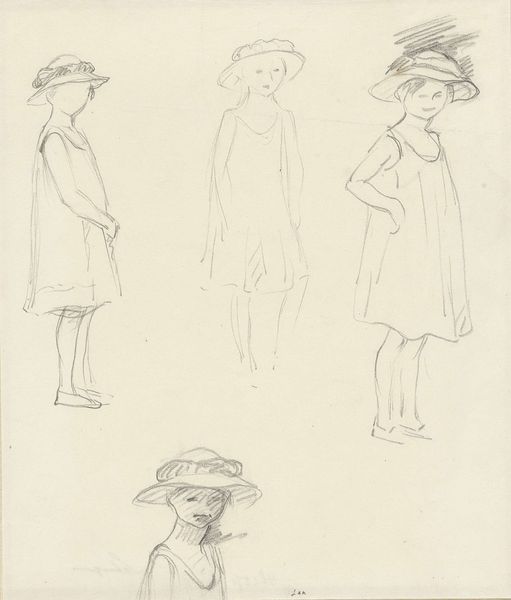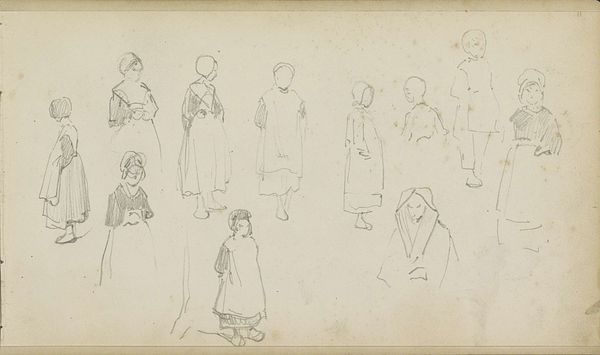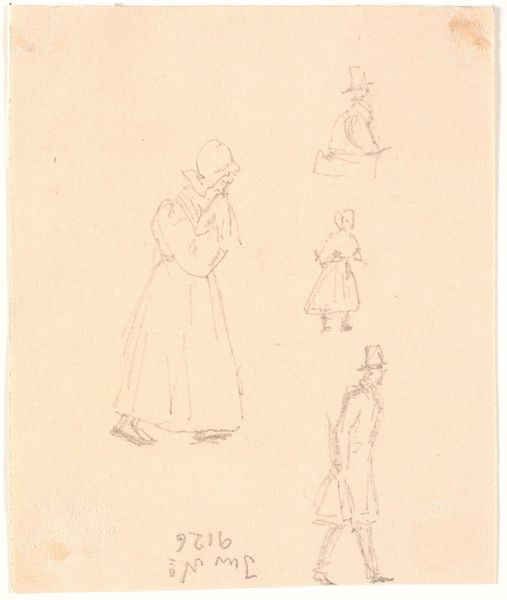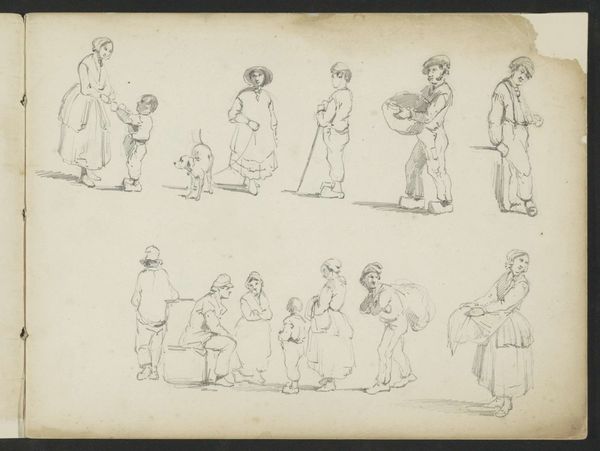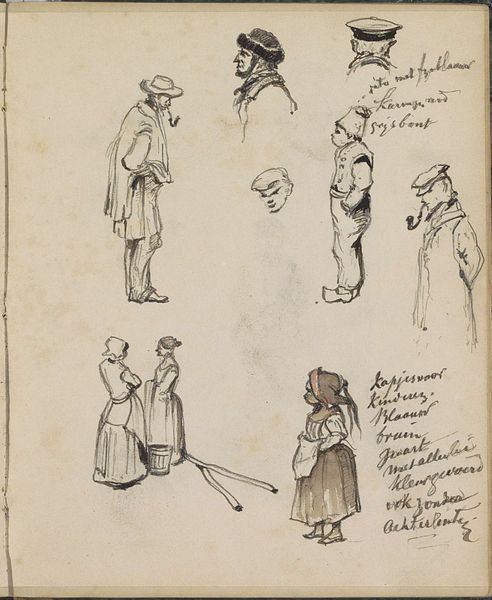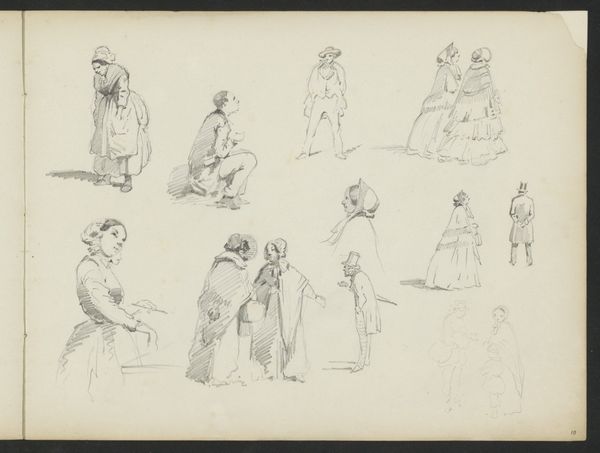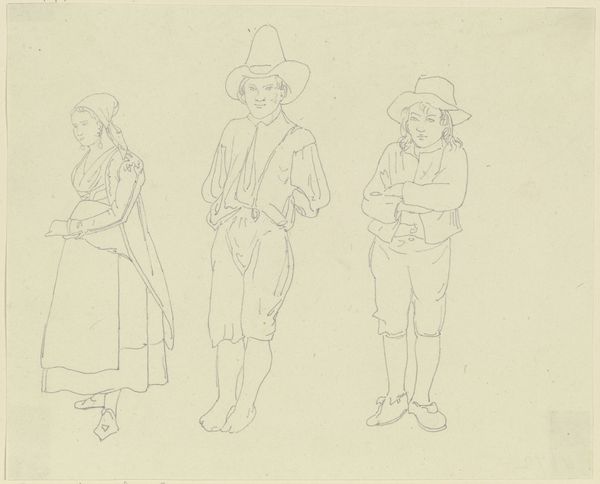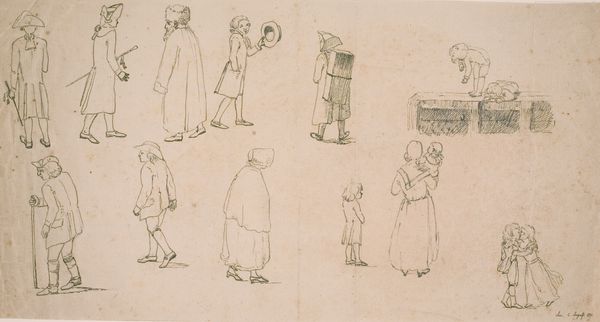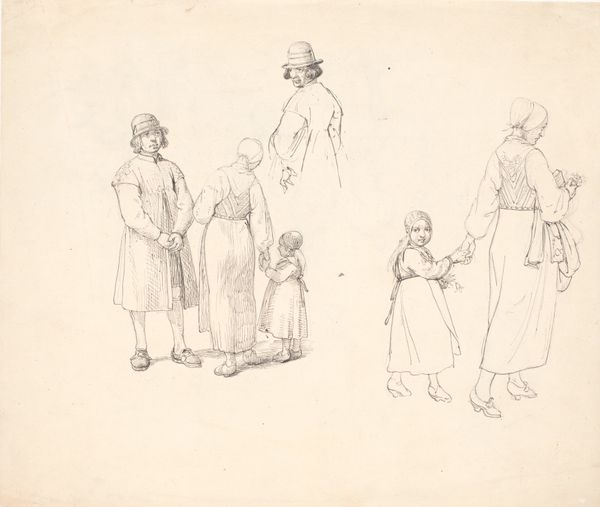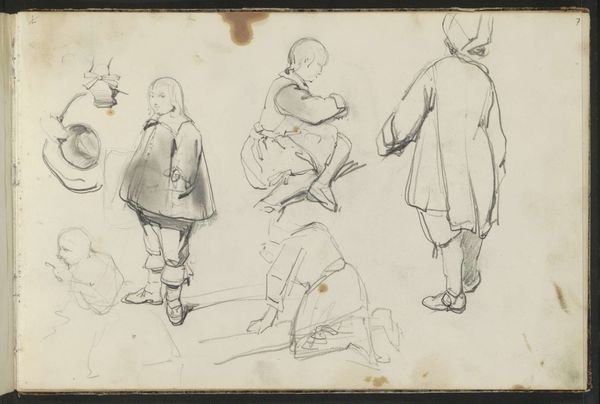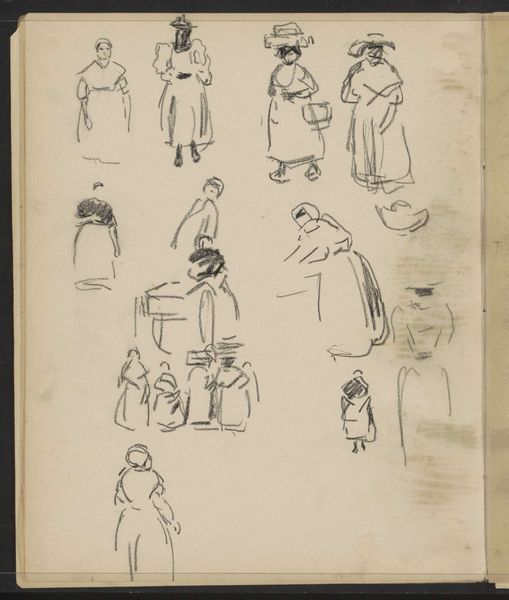
drawing, paper, pencil
#
portrait
#
drawing
#
figuration
#
paper
#
historical fashion
#
romanticism
#
pencil
#
sketchbook drawing
#
genre-painting
#
history-painting
#
academic-art
#
clothing design
Dimensions: height 237 mm, width 340 mm
Copyright: Rijks Museum: Open Domain
Curator: Let’s turn our attention to this intriguing page from Josephus Augustus Knip’s sketchbook: "Studieblad met Italiaanse boeren en boerinnen," or "Study Sheet with Italian Peasants," dating from between 1787 and 1847. Editor: My immediate impression is one of poised observation. These aren’t posed figures, exactly, but captured studies, a quiet dignity amidst the rural life the artist is charting. There’s a delicate formality in the line work, almost as if Knip approached the page with both reverence and a keen interest in detail. Curator: Knip was indeed known for his meticulous observation. His works are so fascinating due to the inclusion of very precise and varied details. The sheet reveals a series of figures, both male and female, adorned in traditional Italian clothing, complete with studies of the back views and headwear, providing an almost encyclopedic survey of local attire. I find them so symbolic. Editor: Absolutely! This act of recording itself places a certain emphasis on the subjects. The decision to capture these figures signifies the way even seemingly commonplace cultures are important and worthy of preservation, wouldn't you say? Especially when considered alongside other depictions of labor, which often exclude women in such clear positions. Curator: Most certainly. Consider the recurring motif of headwear. Hats are so meaningful within social constructs: They shield, protect, distinguish social class, signal regional affiliation… We even see details like the way hair is carefully bound or dressed. The clothing is almost an index of the wearer’s place in society, a set of signals communicating to others. Editor: Yes, and perhaps signaling something about Knip’s position too. A Dutch artist sketching Italians; there’s a tension there in the representation of “the other,” so to speak. A question arises as to whose gaze is prioritized: does he capture or appropriate a culture? Curator: The Romantic interest in local customs and "folk" is definitely at play here, though the distance suggests it is academic art and not some idealized nostalgia for simple living. Even now, such cultural signifiers hold weight. Think about the re-emergence of indigenous patterns or the politicization of dress. Knip’s drawings become not just visual records but seeds of meaning. Editor: Looking closer, these sketches push me to consider clothing design itself. The choice of one shape or silhouette versus another, the fabrics employed, it makes you think. Curator: In its seemingly straightforward recording of Italian rural clothing, this study sheet echoes with meanings, with silent statements about tradition, class, identity, the gaze of the artist, and the symbolic nature of clothing and attire. Editor: Right, this detailed work pushes you to re-examine our daily environment through the lens of culture. It brings history into conversation with our current lives.
Comments
No comments
Be the first to comment and join the conversation on the ultimate creative platform.
